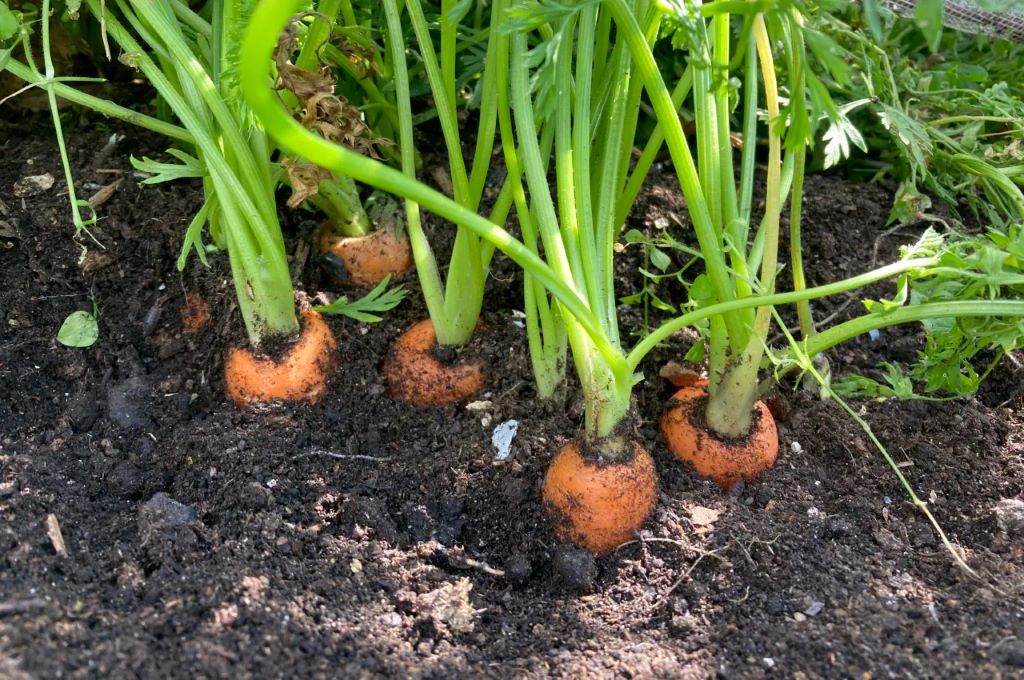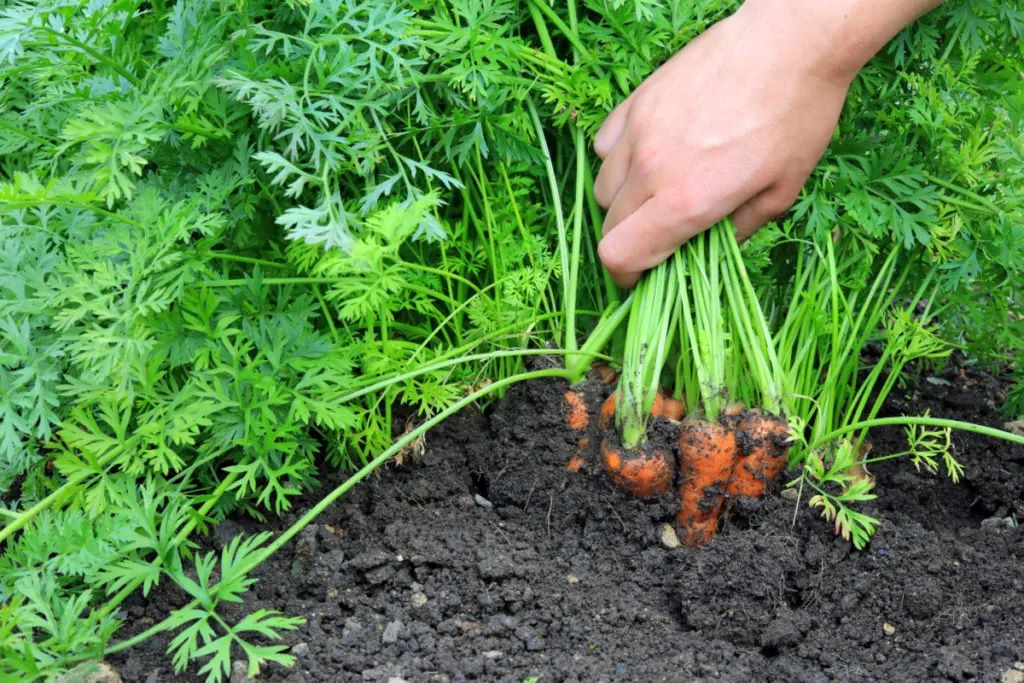
Carrots are a beloved garden staple, offering vibrant color, sweet flavor, and a bounty of nutrients. But timing the harvest is key to enjoying them at their peak. If you’re eager to pluck those orange treasures from the ground, here’s everything you need to know:
Why Harvest Timing Matters
- Flavor: Carrots harvested too early can be bland, while those left too long may become woody or overly sweet.
- Texture: Properly harvested carrots have a crisp, tender bite.
- Storage: Carrots harvested at the right time will store better for longer periods.
Clues Your Carrots Are Ready
Days to Maturity:
- Check your seed packet: The most reliable indicator is the “days to maturity” listed on your seed packet. This is an estimate of the time it takes from sowing seeds to harvest-ready carrots.
- Calendar Countdown: Count forward from your planting date to get a rough idea of when to start checking.
Carrot Top Size and Color:
- Shoulder Peeking: The upper part of the carrot root, called the “shoulder,” may start to peek out of the soil as it matures.
- Diameter: When the shoulder is about ¾ to 1 inch in diameter, it’s usually a good sign they’re ready.
- Vibrant Color: The exposed carrot top should have a deep, vibrant color characteristic of the variety you’re growing.

Related: How to plant carrots in your small garden
Feeling for Shoulders:
- Gentle Probing: If the shoulders aren’t visible, carefully brush away a bit of soil around the base of the carrot tops.
- Finger Test: Gently feel around the top of the root. If you can feel a firm, well-formed shoulder, your carrots are likely ready.
Checking the Greens:
- Lush Growth: Healthy, lush carrot tops generally indicate mature roots.
- Height: Some gardeners use the height of the greens (around 10-12 inches) as a rough guideline, though this varies with the variety.
Harvesting Techniques
- Loosening the Soil: Before pulling, gently loosen the soil around the carrots with a garden fork or trowel. This helps prevent breakage.
- Pulling: Grasp the carrot tops near the base and pull straight up with steady pressure. If the soil is loose enough, the carrot should come out easily.
- Twist and Pull (If Needed): If the carrot resists, gently twist it while pulling to break the roots’ grip on the soil.
After Harvesting
- Remove Tops: Cut the carrot tops about an inch above the root. The tops can draw moisture away from the roots, causing them to shrivel.
- Cleaning: Brush off excess soil, but avoid washing carrots until you’re ready to use them. Moisture can promote spoilage.
- Storage: Store unwashed carrots in a cool, dark, and humid place. A refrigerator crisper drawer works well.
Additional Tips
- Staggered Planting: Sow carrot seeds every few weeks for a continuous harvest throughout the season.
- Taste Test: If you’re unsure, harvest one carrot to test its flavor and texture. This will help you gauge the readiness of the rest.
- Variety Differences: Some carrot varieties mature faster than others. Always refer to your seed packet for specific information.
Common Mistakes to Avoid
- Harvesting Too Early: Carrots harvested prematurely will lack flavor and sweetness.
- Waiting Too Long: Overly mature carrots can become tough and woody.
- Rough Handling: Pulling carrots too forcefully can damage the roots.
By paying attention to these signs and following these harvesting tips, you’ll be able to enjoy your homegrown carrots at their peak of flavor and freshness. Additionally, incorporating insights from the Hatchett Garden Design review on how to harvest willow cuttings can further enhance your gardening knowledge and success.
